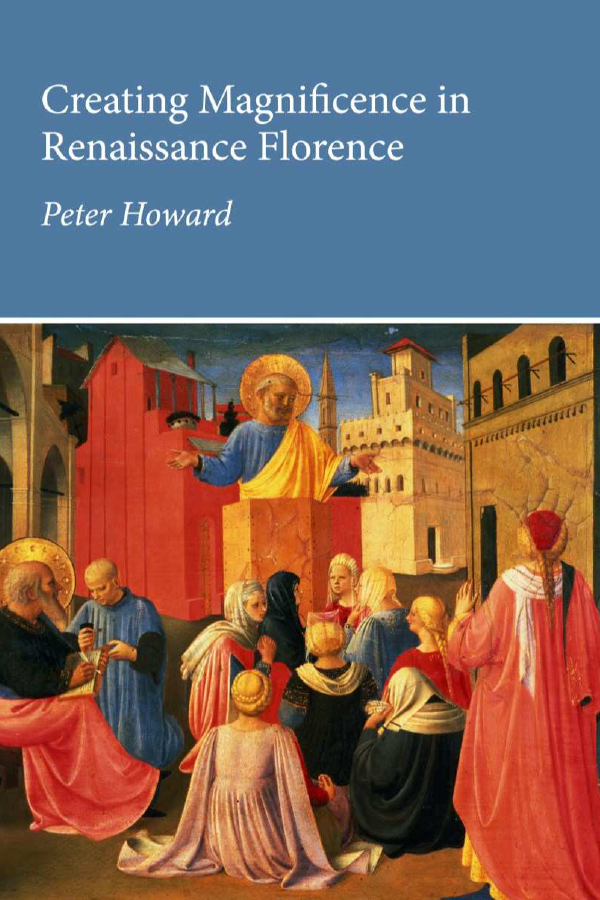Creating Magnificence in Renaissance Florence
By Peter Howard - ES29
Couldn't load pickup availability
Overview
Magnificence was not just an aesthetic judgement – it was a moral virtue. We have long assumed that it was the pursuit of this virtue and of individual fame that led Florence’s cultural patrons to commission the key artworks of the fifteenth century that thrust the city into the front ranks of artistic innovation. According to this view, Aristotle gave the concept its theoretical form and Timoteo Maffei its local voice in a spirited 1450 defence of Cosimo de’ Medici that set his ‘magnificence’ on an individual and largely secular foundation. Peter Howard, however, overturns this concept and argues persuasively not only that Florentines were discussing the virtue of ‘magnificence’ decades earlier, but also that it was mendicant preachers working with medieval texts who took the lead. He points out that Antonino Pierozzi (a Dominican friar who became Florentine archbishop and was eventually canonized) in his sermons of the 1420s articulated concepts of ‘magnificence’ that he later developed in his influential Summa. To do so, Howard carefully reconstructs the concept of ‘magnificence’ by tracing its development through Antoninus’s texts and his mendicant career. As a result, the origins of Florentine public discourse on magnificence are decisively relocated from the 1450s to the 1420s, and from a largely secular to a distinctly religious context.
173 pp.
ISBN: 978-0-7727-2126-6 softcover
Published: 2012
Contents
Foreword
A Note on Naming and Orthography
1. Preaching Magnificence in Renaissance Florence
2. The Idea of Magnificence in the 1420s
3. The Virtue of Magnificence in the Summa of Archbishop Antoninus
4. The Articulation of Public Theology
5. Magnificence by 1450
6. Tradition and Reception
Conclusion
Appendix 1: Antoninus of Florence, Sermo in Septuagesima
Appendix 2: Antoninus of Florence / Henry of Rimini: Concerning Magnificence
Appendix 2: Timoteo Maffei: On the Magnificence of Cosimo de' Medici of Florence against [His] Detractors
Praise
“A well researched, closely argued, and carefully constructed study of the influence of preaching on the attitudes of leading Florentines regarding their use of their wealthy for magnificent building projects in Florence in the first half of the Quattrocento.” — John O’Malley, Georgetown University
“A superb and deeply learned study that overturns conventional readings of the key Renaissance concept of ‘magnificence.’” — Nicholas Terpstra, University of Toronto
“The field needs more volumes like this one, which combines excellent scholarship clearly articulated in an accessible format.” — Jennifer Mara DeSilva, Ball State University. Sixteenth Century Journal 64/2 (2013): 498-500.
“[…] Howard’s book contributes powerfully to demystify the myth of Renaissance Florence as originally defined by Jacob Burkhardt, who perceived it as the result of a secular culture based on the will of the individual emerging against a Medieval, communal world entirely dominated by religious concerns. Rather, Howard demonstrates that the concept of magnificence was consistently discussed within the Dominican order since the thirteenth century, and from that cultural context it was adopted to fit the needs of fifteenth-century Florentines, eventually becoming a major force in the re-shaping of the urban cityscape. The re-conceptualization of the virtue of magnificence undertaken in this study allows us to embed in a much more solid manner the culture of fifteenth-century Florence into its own multi-layered cultural and artistic dynamics, which appear to have been triggered by the shared vision of communal identity rather than by the bookish culture of individual humanists serving the needs and interests of their enlightened patrons. The book is clearly written and enjoyable, and it will be a must-read for generations of scholars interested in Renaissance Italian culture in general, providing a conceptual model for further investigations of central aspects of the intellectual history of early modern Europe.” — Guido Rebecchini, The Courtauld Institute of Art, London. Comitatus: A Journal of Medieval and Renaissance Studies 44 (September 2013): 278-280.
Reviews
The Catholic Historical Review, (Autumn 2015): 924-925. Reviewed by Catherine Kovesi.
Renaissance Quarterly 66/1 (Spring 2013): 198-200. Reviewed by Nirit Ben-Aryeh Debby.
Renaissance and Reformation/Renaissance et Réforme 35/4 (2012): 159-162. Reviewed by William J. Connell.


